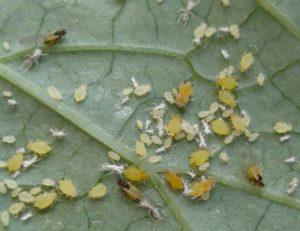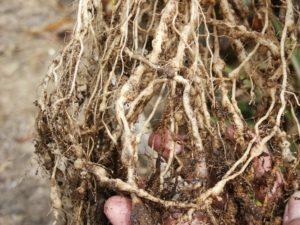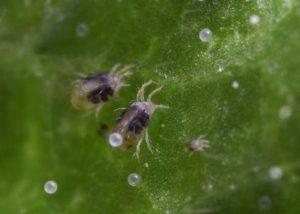Pests on cucumbers: 12 insects with photos and descriptions
Cucumbers are considered one of the most sought after vegetables. The culture is rich in vitamins and trace elements, which are very beneficial for health. Cucumber is a part of many salads and has a pleasant taste. When growing a plant, it is very important to prevent the appearance of pests that can destroy it.
Content
Pests on cucumbers
On cucumbers, you can find several main types of pests:
- eating green shoots;
- harmful to the roots;
- fruit lovers.
melon aphid
The sucking insect reaches a size of 2 mm. The color can be either yellow or dark green. The place of wintering of larvae is fallen leaves, weeds, anthills. Aphid carriers are ants.
Aphids destroy cucumbers from July to August. By sucking the juice of plants, the parasite releases poisons. Thus, leaflets and shoots are affected. Signs of aphids are noticeable when flowers and ovaries wither and fall off. The leaves also dry out and shrivel. The fruits grow slowly.
Ants
You can not call ants pests. They are able to loosen the soil, enrich the soil with humus and trace elements. They also destroy many parasites. However, there is a need to get rid of them, as they eat seedlings and carry aphids.
Gall nematodes
Small worms no more than 2 mm in length.
They have a round shape and white or pearl color. The habitat is soil. They damage the culture at an air humidity of 60 to 65% and a temperature of 24 to 30 degrees Celsius.
Affected leaves and shoots curl. The roots become thin and weak. Blisters are visible on top. The formation of bushes is suspended. Metabolism deteriorates and productivity decreases.
whitefly
Butterfly white. Size 3 mm. Pests are larvae and adults. The best conditions for the insect are high humidity and lack of ventilation in the greenhouse. Parasites suck juices and slow down growth. Feces contribute to leaf erosion, blackening and drying.
spider mite
Arachnid insect that feeds on plant sap. The size does not exceed 1 mm. Prefers low humidity and dry air. Most often, culture comes from clothing or tools.
On the contrary, high humidity is suitable for false spider mites. Signs of defeat are small white dots and a transparent thin cobweb on the stem and leaves. Due to severe damage, the culture can get sick and die.
Medvedka
Large burrowing parasite of dark brown color. Length from 5 to 8 cm. Habitat - warm regions. In a short period of time, it can destroy many seedlings.
Signs of the appearance of a pest include poor ascent of seeds and falling seedlings.
Tobacco thrips
The main diet of the pest consists of tobacco. However, the insect also feeds on cucumbers. Length 1 mm. The body is greyish-yellow. The females lay their eggs on the leaves, infecting the crop. Larvae and adults drink juice. Signs of damage are yellowish-brown spots on the leaves. The leaves curl up and dry out. Growth stops.
Slugs
The appearance of gastropods is facilitated by heavy rains. Activity is observed only at night. The mechanical method is ineffective in this case. Slugs feed on young and green plants, weakening them.
Wireworm
This is the name of the larvae of click beetles. The length is from 1 to 4,5 cm. The color is dark brown. Usually in food he prefers potatoes and carrots. But he does not refuse the roots of cucumbers. As a result, the plant dies.
Mice and rats
Rodents cause irreparable damage to all agriculture. Cucumbers are no exception. Rats and mice are capable of carrying diseases. They feed on ripe fruits and roots of cucumbers.
cucumber mosquito
Coloration dark grey. Length 5 mm. Lives in a greenhouse. Gets into greenhouses with soil. The larva makes a hole in the roots. Mosquitoes are carriers of diseases. Pests contribute to slowing down the growth of the crop and rotting of the root part.
Prevention of pests on cucumbers
It is much easier to carry out prevention than to eliminate the consequences of the appearance of pests.
Maintain the correct temperature and humidity. Disinfect soil.
Choose the right neighbors, feed, mulch the soil.
Treat the seedlings before planting and the neck of the root in the ground.
Methods of struggle
Effective methods are chemicals and folk.
Preparations:
- Aktara;
- Confidor;
- Fitoverm;
- Bazudin;
- Prestige;
- Fufanol.
Infusions and decoctions:
- pepper;
- garlic;
- ash;
- celandine;
- tobacco;
- husks.
Conclusion
Pests can destroy a large number of cucumbers. By sucking the juice out of them, they weaken the plant. When the first insects are found, they begin to fight with the help of folk remedies or insecticides. However, preventive measures can prevent the invasion of parasites.
Previous

